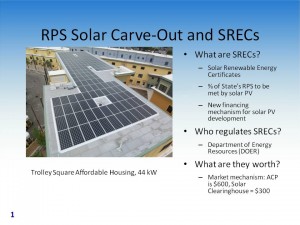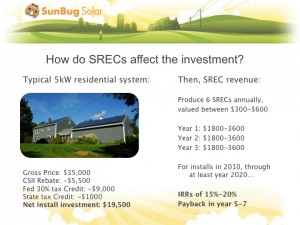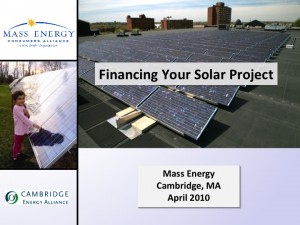 The Cambridge Energy Alliance recently organized an event at the Cambridge City Hall Annex on financing solar energy projects for your home and business.
The Cambridge Energy Alliance recently organized an event at the Cambridge City Hall Annex on financing solar energy projects for your home and business.
The event featured some wonderful presentations by our panelists and we wanted to share them with you here.
Here is the presentation from the Mass Clean Energy Center giving an overview of the CommonWealth Solar rebate program, renewable energy certificates, tax incentives, and other financial options to help pay for a solar project.
SunBug Solar gave a presentation about Solar Renewable Energy Credits (SRECs).
Here is the presentation from Mass Energy about regulations, “neighborhood” net metering, and ownership structures.
Nexamp presented about photovoltaic projects for businesses, institutions, and government facilities.
If you would like to find out more, check out our website about renewables for your home or for your business.





